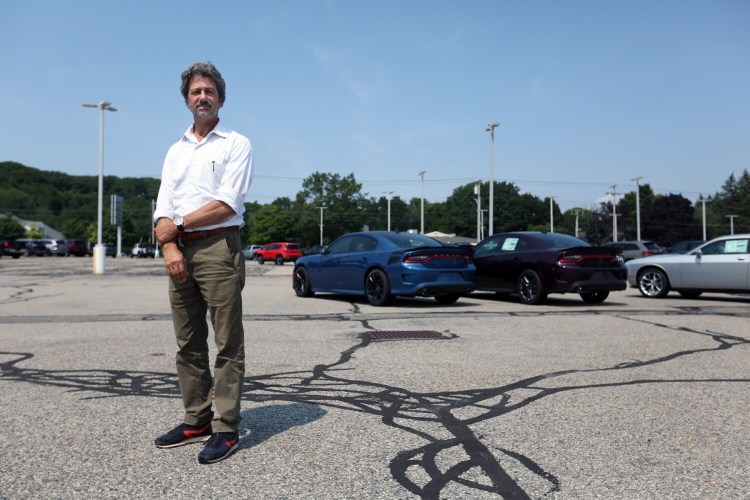Cars are the poster children for Inflation 2021.
New cars are in short supply and dealers aren’t budging much on prices. Used cars are especially dear, causing prices to shoot upward earlier this year.
That reflects the new reality for buyers and sellers, according to the head of one of Maine’s largest string of auto dealerships, although he said there are nuances beyond high prices and short supply.
Adam Lee, whose family operates 19 dealerships in the state, said the pandemic hit the car business hard, and emerging from the shadow of the coronavirus isn’t any easier.
Last year, dealerships were forced to close for months at a time and adopt new ways to allow customers to take a test drive and handle all the paperwork involved in a sale. At the same time, car rental companies were paring their inventories and canceling purchases because both business and recreational travel virtually disappeared at the height of the pandemic.
Prices and demand for used cars rose dramatically earlier this year but have since shown signs of easing.
Still, the average U.S. price for a used car in June hit nearly $25,000 – a record – according to the Bureau of Labor Statistics. The average price increased by 45 percent from June 2020 to June 2021, and by more than 10 percent from May to June alone. According to Atlanta-based Cox Automotive, owner/operator of Kelley Blue Book and Autotrader.com, dealers said they had enough used car inventory for 34 days of demand in June, 11 days fewer than they had reported for the same month in 2019.
Even high-mileage cars are commanding high prices. California-based automotive information service Edmunds.com said the average price for a car with 100,000 miles or more was $16,489 in late July, up 31 percent from a year earlier.
Carmakers have been forced to adapt as well, paring down production to reflect slowing sales and changing the way their factories operated to reduce the spread of the virus. Global supply chain disruptions have created shortages of key manufacturing components such as microchips and certain plastics.
That’s apparent in dealers’ lots. Lee said he would normally have 1,200 new cars in the lot at his Westbrook dealership, but now the number is only about 200.
Now that rental car companies are buying again after more than a year of relative inactivity, that means individual buyers have fewer choices, Lee said.
Car companies aren’t raising sticker prices in reaction to the new marketplace, Lee said. It’s rare for carmakers to raise prices midyear, he said, but there are fewer incentives being offered to buyers, and his salespeople don’t have much leeway or incentive to negotiate.
“It’s one of those rare times when, if the dealer says, ‘If you want it, you should buy it today,’ believe them,” Lee said.
Lee said the lower inventory means less selection, and that those in the market for a new car shouldn’t expect an influx of new cars in the coming weeks that will provide them with more options. His next shipment from Toyota, for instance, consists of about three dozen cars and, of those, 17 are already sold.
Dealers still work with other dealers to look for specific models and option packages on a competitor’s lot to see if they can find the exact car a buyer is looking for, Lee said, but with all dealers facing reduced inventories, that can be difficult.
“You just don’t have the same selection,” he said. “It’s forced us to be a little more creative, but we try to find a way. We’re scrappy.”
The limited selection in new cars led many buyers to look for what they want in the used car lot, and prices for them shot up earlier this year, Lee said. But prices for used cars are more volatile than for new ones, he said, and they have already started to ease.
Lee also said that used car prices tend to drop a little as the market softens and then drop more sharply as dealers become more eager to make sales.
Send questions/comments to the editors.




Success. Please wait for the page to reload. If the page does not reload within 5 seconds, please refresh the page.
Enter your email and password to access comments.
Hi, to comment on stories you must . This profile is in addition to your subscription and website login.
Already have a commenting profile? .
Invalid username/password.
Please check your email to confirm and complete your registration.
Only subscribers are eligible to post comments. Please subscribe or login first for digital access. Here’s why.
Use the form below to reset your password. When you've submitted your account email, we will send an email with a reset code.